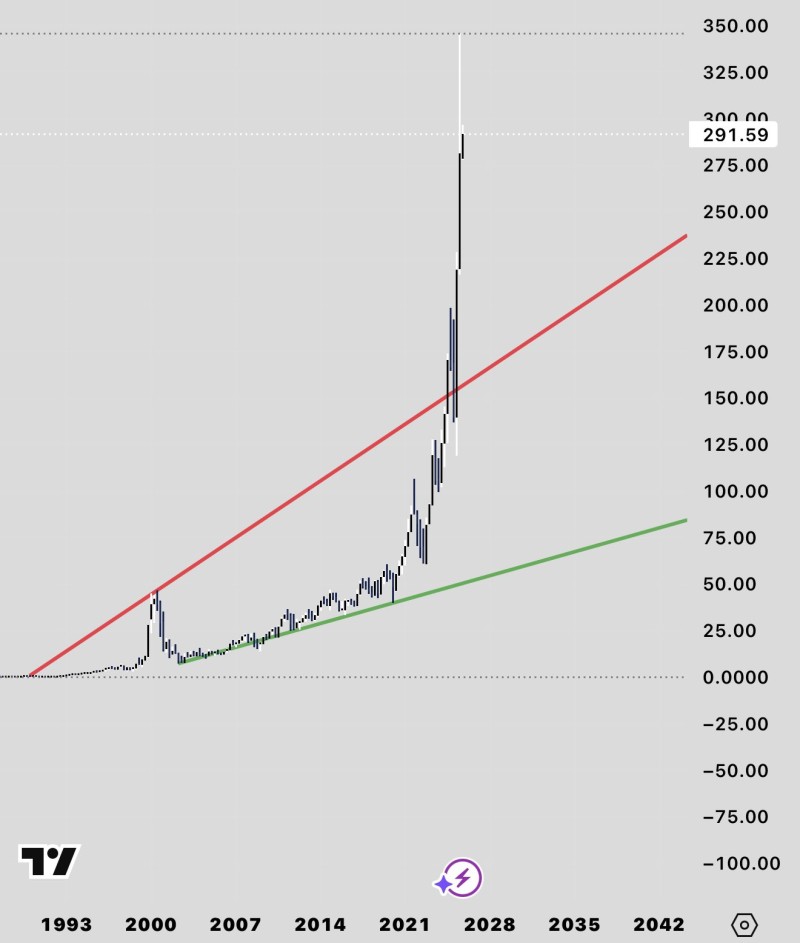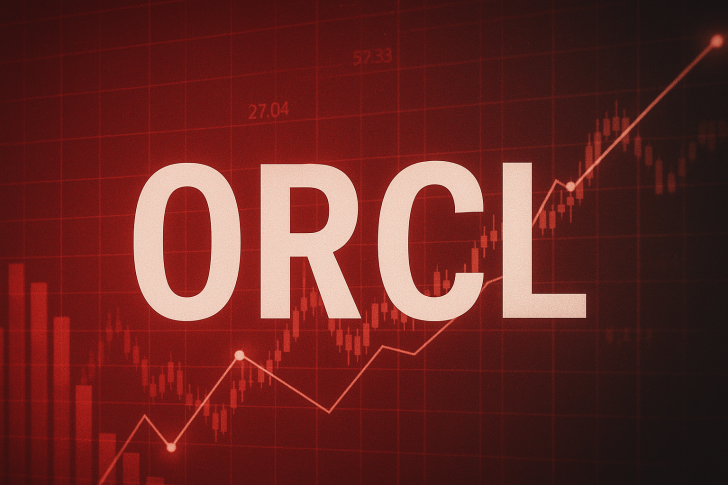Oracle (ORCL) unstoppable climb has pushed shares to $291.59, marking an all-time high that's caught the attention of both bulls and bears. The surge reflects genuine excitement around AI-driven partnerships and cloud expansion, yet the near-vertical price action has some traders nervous. The stock now sits well outside its historical growth pattern, raising questions about sustainability.
Chart Analysis: Stretched Beyond Historical Norms
Market observers, including Oculustrade trader, have flagged this setup as potentially vulnerable to a sharp reversal. Oracle's long-term chart tells a dramatic story - rocketing from under $50 in 2020 to nearly $300 today, transitioning from steady growth into what looks like a parabolic blowoff.

The stock has blown past its red resistance trendline, historically the upper boundary of its growth channel, suggesting momentum that may have gotten ahead of itself. Long-term support sits way down around $75, highlighting just how disconnected current prices are from historical norms. Trading significantly above $250 puts Oracle in territory where corrections typically follow explosive rallies.
What's Actually Driving This Rally?
The fundamental story isn't baseless hype. Oracle's strategic partnerships with Nvidia and Microsoft have positioned it as a genuine player in AI infrastructure. The company has delivered consistent revenue growth, particularly in cloud services, which has kept institutional investors engaged. Beyond company-specific factors, there's been a massive rotation of capital into AI and enterprise software stocks globally, and Oracle has captured its share. These are real catalysts, though they may already be fully reflected in the current valuation.
What Happens Next?
Investors are staring at two paths. A correction toward the $225–$250 range wouldn't be surprising if momentum cools or if the broader tech sector hits turbulence. Alternatively, strong fundamentals could keep supporting the stock, though the risk-reward equation looks less attractive after such a steep run. Parabolic moves rarely end gently - they either consolidate for extended periods or snap back quickly.
 Peter Smith
Peter Smith

 Peter Smith
Peter Smith


